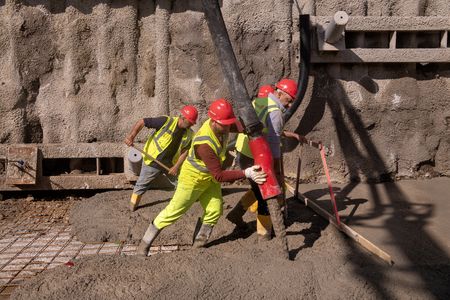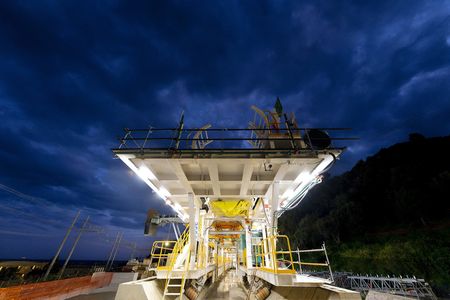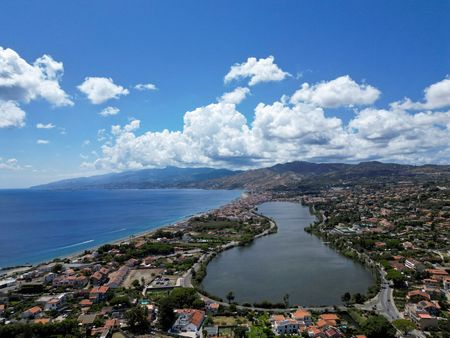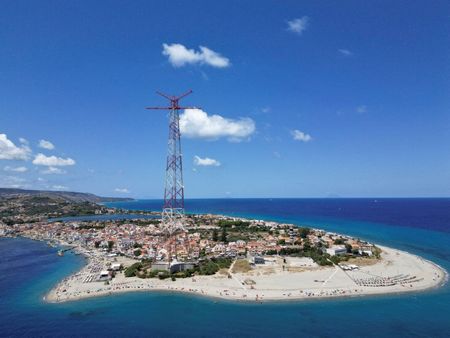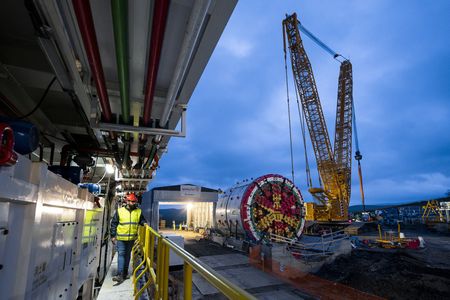By Andrea Mandala
CALTANISSETTA, Italy (Reuters) -For decades, the story of southern Italy has been one of departure, of generations leaving the hills of Calabria and the shores of Sicily in search of opportunity in the industrial north or abroad.
Now however, growing numbers of migrants are being lured back by improving job prospects and infrastructure projects, offering hope that the chronic wealth divide between Italy’s regions could finally begin to narrow.
Italy has the euro zone’s third largest economy but regions such as Sicily, Campania around Naples and Calabria in the toe of the peninsula are among the poorest in the currency bloc, Eurostat data shows.
A lasting recovery in the south would stabilise internal migration flows, potentially improving public services and giving a competitive boost to Italy as a whole.
SOUTH’S GDP AND JOB GROWTH OUTPACE NORTH
Cristian Imprescia, a 52-year-old geologist who returned to his native Sicily in 2019 after years in northern cities from Genoa to Bolzano, said infrastructure development in the south has given him a constant flow of work in ground surveys for railways and other projects.
“I am getting so many proposals I can barely keep up,” he said.
Economic growth in southern Italy, known as the “Mezzogiorno”, outpaced the rest of the country for a third year running in 2024, buoyed by a surge in construction linked to the European Union’s post-COVID-19 Recovery Plan (NRRP).
The region, long stereotyped as “backward” by many in the north, is now showing signs of revival.
The south’s gross domestic product rose 8.6% between 2022 and 2024, outstripping the 5.6% growth recorded in the rest of the country in that period, according to data from the Italian research institute SVIMEZ, which specialises in analysis of the southern economy.
“This kind of sustained outperformance hasn’t happened in decades,” said SVIMEZ director Luca Bianchi.
Italy’s NRRP allocation from the EU will total some 194 billion euros ($227.45 billion) between 2021 and the end of the scheme in 2026.
At least 40% is earmarked for the south, which accounts for about a third of Italy’s population of 59 million, and just 22% of its output.
Employment in the region rose 2.2% last year, well above the national average of 1.6%, as jobs in the construction industry surged 6.9%, data from national statistics bureau ISTAT shows.
Meanwhile, the number of southern Italians working in central-northern regions fell 3.6% in 2023, according to SVIMEZ, indicating a shift in migration patterns.
Early data suggest the trend continued in 2024, though arresting the deeply entrenched trend of southern emigration will be a Herculean task.
Some 241,000 southern Italians took up residence in the centre-north in 2023-24, ISTAT data shows, almost twice the number who moved the other way.
NEED FOR INVESTMENT IN ‘SOCIAL INFRASTRUCTURE’
SVIMEZ chief Bianchi said EU cash was boosting demand in the south, but a long-term recovery required investments in what he called “social infrastructure” like schools, healthcare and childcare.
“Migration is driven not just by economic data, but by how people perceive their future,” he said.
Andrea Falzone, a 61-year-old Sicilian architect, left the northern city of Bologna in 2023 to return to the Mediterranean island, where he now works on transport construction projects.
“We’re talking about tens of billions of euros of investments over the next decade. With that kind of money being spent, things have to change,” Falzone said.
He is currently working on a project to upgrade the railway between Palermo and Catania, Sicily’s largest cities.
Webuild, Italy’s biggest construction company, is engaged in 19 major infrastructure projects across the southern regions of Calabria, Campania, Puglia and Sicily, with 8,700 workers directly or indirectly employed.
These include a high-speed rail line between Salerno, just south of Naples, and Reggio Calabria in Italy’s toe, and a nearly 500-kilometre (310-mile) highway along the Ionian coast between Puglia and Calabria.
MESSINA BRIDGE AND CHEAPER RENTS
By far the most ambitious and high-profile scheme planned, however, is the construction of the world’s longest single-span bridge across the Strait of Messina to connect Sicily to the mainland, at a cost of 13.5 billion euros.
Webuild leads a consortium of companies on the project, including Spanish group Sacyr and Japan’s IHI. The bridge’s supporters say it could generate over 100,000 jobs over the seven-year building period.
Its detractors, who are seeking to block the project, challenge these estimates, warn the bridge could harm the environment and say the money would be better spent on projects to improve Sicily’s dilapidated public services.
Raffaele Girlando, 24, from Ragusa, Sicily, is studying building engineering at Milan’s Politecnico University. He eventually wants to bring his skills back home and work on the bridge.
“The Messina Bridge is a dream I’ve had since I was a kid,” he said. “From an engineering perspective, it’s a world-class challenge, and as a Sicilian it would also be a source of pride and renewed interest in our region.”
With job prospects improving in the south, migrants can also now afford to consider the region’s other advantages such as its sunny climate, slower pace of life and cheaper living costs.
Falzone, the Sicilian architect, moved back to Caltanissetta in the centre of the island, after his landlord doubled the rent on his two-room apartment in Bologna to 1,000 euros a month.
“It became impossible to manage economically, so I pushed for a transfer back to Sicily where I can stay in my own home with my family,” he said.
(Additional reporting by Gavin Jones and Alvise ArmelliniEditing by Gavin Jones and Frances Kerry)

